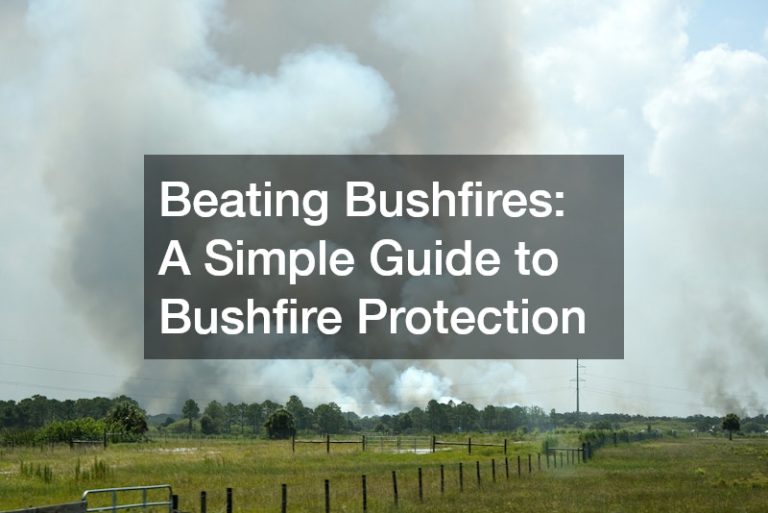
1.1 Seal and Inspect Windows and Doors
Your windows and doors are the first line of defence against the cold. Seal any gaps with weatherproofing tape or caulk to keep draughts out. Consider upgrading to double-glazed windows for improved energy efficiency and insulation—a practical option for Australian homes, particularly in cooler regions like Tasmania or the Blue Mountains.
1.2 Winterise Plumbing Systems
Frozen pipes can cause severe damage. Drain and insulate any exposed plumbing to prevent freezing. In areas such as Victoria’s alpine regions, where temperatures can drop significantly, professional plumbing inspections can identify potential risks.
1.3 How to Clean and Store Outdoor Furniture
Store outdoor furniture in a dry, sheltered area to protect it from harsh weather. Clean cushions and frames thoroughly to prevent mould or mildew. For items that remain outdoors, invest in durable waterproof covers. Trim nearby trees to reduce the risk of debris accumulating on patios or furniture during storms.
1.4 Service Heating Systems
If your summer home is in a region that gets cold, such as parts of South Australia or regional New South Wales, servicing your heating system is essential. A qualified technician can inspect, clean, and replace filters to ensure your system operates efficiently. This proactive approach can save money on energy bills and ensure comfort.
1.5 Protect Entry Points from Pests
Australia’s unique wildlife and pests, like rodents and insects, can invade homes during winter. Seal cracks around doors, windows, and walls, and install mesh screens to block pests from entering vents. Consider professional pest control to mitigate risks of infestations.
Best Practices for Preventing Mould and Mildew
2.1 Maintain Proper Ventilation
Ventilation is crucial in high-humidity areas such as bathrooms, kitchens, and laundries. Use exhaust fans regularly and ensure they are in good working order. In regions like Queensland, maintaining airflow helps combat humidity and prevents mould growth.
2.2 Use Dehumidifiers
Invest in a dehumidifier if you live in a humid area like the Gold Coast or the Northern Territory. Aim for indoor humidity levels between 30% and 50% to keep your home comfortable and mould-free.
2.3 Inspect Regularly for Leaks
Inspect roofs, windows, and plumbing regularly for signs of leaks. Clear gutters of debris to ensure proper water drainage and reduce the risk of water pooling, especially in areas prone to heavy rainfall, such as Sydney or Brisbane.
2.4 Clean and Disinfect Common Areas
Bathrooms, kitchens, and basements are breeding grounds for mould. Use mould-killing cleaning products to stop spores from spreading. Regular cleaning is particularly important in coastal areas where moisture levels are higher.
2.5 Monitor Humidity Levels
Install a humidity meter to monitor levels in your home. Maintaining the right humidity range can prevent mould and mildew growth, keeping your home healthy and comfortable.
How Often Should I Check and Maintain the Roof?
3.1 Conduct Seasonal Inspections
Roof inspections should be done at least twice a year—before and after storm seasons. Look for loose or damaged tiles, shingles, and other areas of concern. In Australia’s unpredictable weather, regular checks can prevent costly damage.
3.2 Clean Gutters and Downspouts
Clogged gutters can lead to water damage and leaks. Clear out leaves, sticks, and debris regularly, especially after autumn in areas with heavy rainfall like Melbourne.
3.3 Replace Damaged Tiles or Shingles
Replace any cracked or missing tiles promptly. Unaddressed issues can lead to leaks and structural damage, particularly during heavy rain.
3.4 Ensure Proper Insulation
Proper insulation not only prevents heat loss during winter but also keeps your home cooler in summer. Check your insulation and upgrade if necessary to enhance energy efficiency.
3.5 Watch for Signs of Sagging or Leaks
Address any visible signs of sagging or leaks immediately. Professional roofers can assess and repair potential issues before they worsen.
Maintaining Landscaping During the Off-Season
4.1 Trim Shrubs and Trees
Prune shrubs and trees to reduce the risk of storm damage. Overhanging branches can break during storms, posing risks to your home and outdoor spaces.
4.2 Mulch Plants and Flower Beds
In colder regions like Canberra or Tasmania, mulch helps protect plant roots from frost. In warmer areas, mulch conserves moisture and stabilises soil temperatures.
4.3 Protect Outdoor Pipes
Insulate outdoor pipes to prevent freezing. Drain irrigation systems and add antifreeze where needed, particularly in regions prone to frosts.
4.4 Store Gardening Tools Properly
Clean and oil gardening tools before storing them in a dry area. Keeping them off the ground can extend their lifespan.
4.5 Plan Your Spring Projects
Use the off-season to plan landscaping improvements. Ordering materials and scheduling projects early can make your transition to spring smoother.
Maintaining and Storing Your Pool
5.1 Balance Pool Chemicals
Test and balance your pool’s chemical levels before closing it for the winter. Adjust pH, alkalinity, and chlorine levels to prevent mineral buildup and algae growth.
5.2 Clean and Store Pool Equipment
Thoroughly clean pool equipment, including filters and skimmers. Ensure they are dry before storing them in a sheltered location.
5.3 Cover the Pool Securely
Invest in a high-quality pool cover to protect it from debris and the elements. Secure the cover to prevent wind or storm damage.
5.4 Lower Pool Water Levels
Lower the water level slightly if freezing temperatures are a concern. However, avoid draining it completely to maintain structural integrity.
5.5 Inspect the Pool Liner or Surface
Check for cracks or tears in the liner or surface. Address any issues during the off-season to avoid further damage.
5.6 Winterise Pool Plumbing
Drain pipes and equipment to prevent freezing. Use pool antifreeze if necessary to protect the system.
Maintaining HVAC Systems
6.1 Schedule Regular Servicing
HVAC systems require professional servicing to maintain efficiency. Regular checks can prevent costly breakdowns and ensure optimal performance.
6.2 Replace Air Filters
Replace or clean air filters every 1-3 months. Clogged filters reduce efficiency and increase energy consumption.
6.3 Clean Air Vents
Dust and debris in air vents reduce airflow and indoor air quality. Clean them regularly to maintain system performance.
6.4 Check Ductwork for Leaks
Seal any leaks in ductwork to improve HVAC efficiency and reduce energy costs.
6.5 Optimise Thermostat Settings
Use a programmable thermostat to set energy-saving temperatures while you are away. This can significantly reduce energy bills.
Managing Home Security During the Off-Season
7.1 Install a Security System
Modern security systems with cameras, motion sensors, and alarms provide peace of mind. Remote monitoring is especially helpful when you’re away.
7.2 Check Security Features Regularly
Inspect locks, alarms, and cameras to ensure they are functioning properly.
7.3 Use Timers for Lights
Set indoor and outdoor lights on timers to create the illusion of occupancy and deter intruders.
7.4 Keep Neighbours Informed
Let trusted neighbours know you’ll be away so they can monitor your property for unusual activity.
7.5 Securely Store Valuables
Store valuables in a secure location or offsite to reduce risks.
Handling Your Summer Home’s Electrical Maintenance
8.1 Check for Frayed Wires
Inspect wiring for signs of wear or damage. Replace frayed wires to minimise fire risks.
8.2 Update Circuits
Outdated circuits should be upgraded by a licensed electrician to enhance safety and efficiency.
8.3 Test Smoke and Carbon Monoxide Detectors
Replace batteries and ensure detectors are operational. These devices are crucial for home safety.
8.4 Backup Power Solutions
Invest in a generator if you live in a storm-prone or rural area. Backup power ensures your home remains functional during outages.
Maintaining Home Appliances
9.1 Defrost and Clean the Refrigerator
Empty and clean your refrigerator, defrosting it if necessary. Leave the door slightly ajar to prevent mould growth.
9.2 Clean Washers and Dryers
Run a cleaning cycle to remove detergent buildup. Check hoses for signs of wear or leaks.
9.3 Clean the Oven and Range
Remove grease and food debris. Follow the manufacturer’s instructions for self-cleaning features.
9.4 Inspect Small Appliances
Clean and check small appliances like kettles, toasters, and coffee makers for damage. Replace faulty items as needed.
9.5 Unplug Non-Essential Devices
Unplug devices you won’t be using and use surge protectors to safeguard essential electronics.
Ensuring Safe Water Quality During Long Periods of Non-Use
10.1 Clean and Flush Water Systems
Run water through pipes periodically to prevent buildup and stagnation.
10.2 Regularly Test Water Quality
Use test kits to ensure water remains safe for consumption and use.
10.3 Use Water Softening Systems
Install or maintain water softeners to reduce mineral buildup in plumbing.
10.4 Maintain Filtration Systems
Replace filters regularly to ensure clean and safe water supply.
Maintaining your summer home during the off-season is essential to its longevity. By following these comprehensive tips, you can avoid costly repairs and enjoy peace of mind knowing your property is in top condition. Proper care ensures a seamless return to relaxation when summer arrives again.


